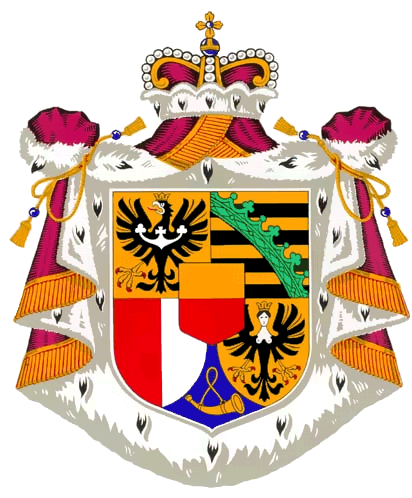 The Princely family of Liechtenstein took their name from a castle in Austria that they owned in the twelfth- and thirteenth-centuries (the name means "bright stone"). This wealthy dynasty acquired lands across the Holy Roman Empire, but they only held these territories as fiefdoms
The Princely family of Liechtenstein took their name from a castle in Austria that they owned in the twelfth- and thirteenth-centuries (the name means "bright stone"). This wealthy dynasty acquired lands across the Holy Roman Empire, but they only held these territories as fiefdoms
under superior feudal nobles, to whom they often acted as close advisers. The Third Prince, Hans-Adam I, occasionally worked for the Imperial Court as a financial advisor when he wasn't acquiring a substantial fortune for himself.
Hans-Adam used his fortune to fulfil a dynastic ambition: to hold lands directly under the Imperial throne and thus gain the power associated with a seat in the Imperial diet, called the Reichstag. He purchased the domain of Schellenberg in 1699 and the county of Vaduz thirteen years later just before he died. On 23rd January 1719 the Holy Roman Emperor Charles IV decreed that the two lands were united as a Fürstentum ("principality") with the name Liechtenstein in honour of the Fifth Prince Anton-Florian, who had served the Emperor as Chief Intendant and Prime Minister when he was Archduke of Austria.
Related posts
Holy Roman Empire ended: 6th August 1806
Customised search for historical information
23 January 2011
On this day in history: Principality of Liechtenstein created, 1719
Labels:
C18th,
Central Europe,
Politics
Subscribe to:
Post Comments (Atom)















0 comments:
Post a Comment